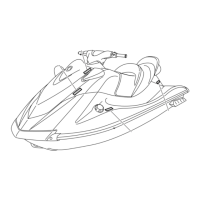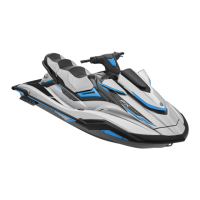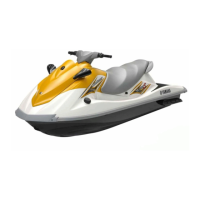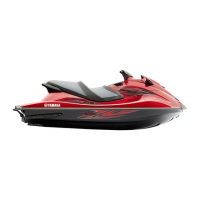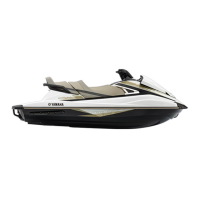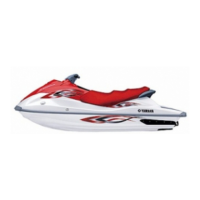Do you have a question about the Yamaha WaveRunner VX 2018 and is the answer not in the manual?
Manufacturer's declaration of compliance with EU directives.
Welcome message, manual usage, and explanation of safety symbols (Warning, Notice, Tip).
Covers identification numbers, manufactured date, model info, and builder’s plate.
Explains important labels, warning labels, and other relevant markings on the watercraft.
Covers operator limits, safe riding practices, and essential equipment recommendations.
Details hazards, watercraft characteristics, and specific safety for water sports.
Covers safe boating rules and enjoying the watercraft responsibly.
Defines terms and illustrates the location of main watercraft components.
Explains remote transmitter, security system, engine switches, levers, steering, and cooling.
Details on Low RPM, No-wake, and Cruise Assist modes.
Covers the multifunction center, various displays, gauges, and warning indicators.
Explains meters like hour and voltmeter, and specific warning indicators.
Procedures for seats, handgrips, reboarding steps, and tie points like bow/stern eyes and cleats.
Details on storage compartments and the fire extinguisher holder.
Guidelines for fueling, fuel types, and engine oil requirements and checks.
Instructions for draining bilge water and proper procedures for transporting on a trailer.
Essential steps for breaking in the engine for optimal performance and longevity.
Comprehensive checklists for inspecting the watercraft before and after operation.
Guidance on learning controls, riding position, launching, starting, and basic maneuvers.
Covers stopping, turning, operating in reverse, boarding, special situations like capsizing, and beaching.
Procedures for flushing, cleaning, and general post-operation care.
Guidance on battery care, storage, and preparing for long-term storage.
Information on the included tool kit and the periodic maintenance schedule.
A chart to help diagnose and resolve common issues with the watercraft.
Actions to take in critical situations like clogged intakes, reverse gate issues, or battery problems.
Manufacturer's declaration of compliance with EU directives.
Welcome message, manual usage, and explanation of safety symbols (Warning, Notice, Tip).
Covers identification numbers, manufactured date, model info, and builder’s plate.
Explains important labels, warning labels, and other relevant markings on the watercraft.
Covers operator limits, safe riding practices, and essential equipment recommendations.
Details hazards, watercraft characteristics, and specific safety for water sports.
Covers safe boating rules and enjoying the watercraft responsibly.
Defines terms and illustrates the location of main watercraft components.
Explains remote transmitter, security system, engine switches, levers, steering, and cooling.
Details on Low RPM, No-wake, and Cruise Assist modes.
Covers the multifunction center, various displays, gauges, and warning indicators.
Explains meters like hour and voltmeter, and specific warning indicators.
Procedures for seats, handgrips, reboarding steps, and tie points like bow/stern eyes and cleats.
Details on storage compartments and the fire extinguisher holder.
Guidelines for fueling, fuel types, and engine oil requirements and checks.
Instructions for draining bilge water and proper procedures for transporting on a trailer.
Essential steps for breaking in the engine for optimal performance and longevity.
Comprehensive checklists for inspecting the watercraft before and after operation.
Guidance on learning controls, riding position, launching, starting, and basic maneuvers.
Covers stopping, turning, operating in reverse, boarding, special situations like capsizing, and beaching.
Procedures for flushing, cleaning, and general post-operation care.
Guidance on battery care, storage, and preparing for long-term storage.
Information on the included tool kit and the periodic maintenance schedule.
A chart to help diagnose and resolve common issues with the watercraft.
Actions to take in critical situations like clogged intakes, reverse gate issues, or battery problems.
| Number of Cylinders | 4 |
|---|---|
| Displacement | 1049cc |
| Compression Ratio | 11.0:1 |
| Fuel System | Electronic Fuel Injection (EFI) |
| Starter System | Electric |
| Lubrication System | Wet Sump |
| Fuel Type | Regular Unleaded |
| Seating Capacity | 3 |
| Rider Capacity | 3 |
| Engine Type | 4-stroke, 4-cylinder |
| Fuel Capacity | 50 L |
| Length | 3, 370 mm |
| Dry Weight | 772 lbs (350 kg) |

